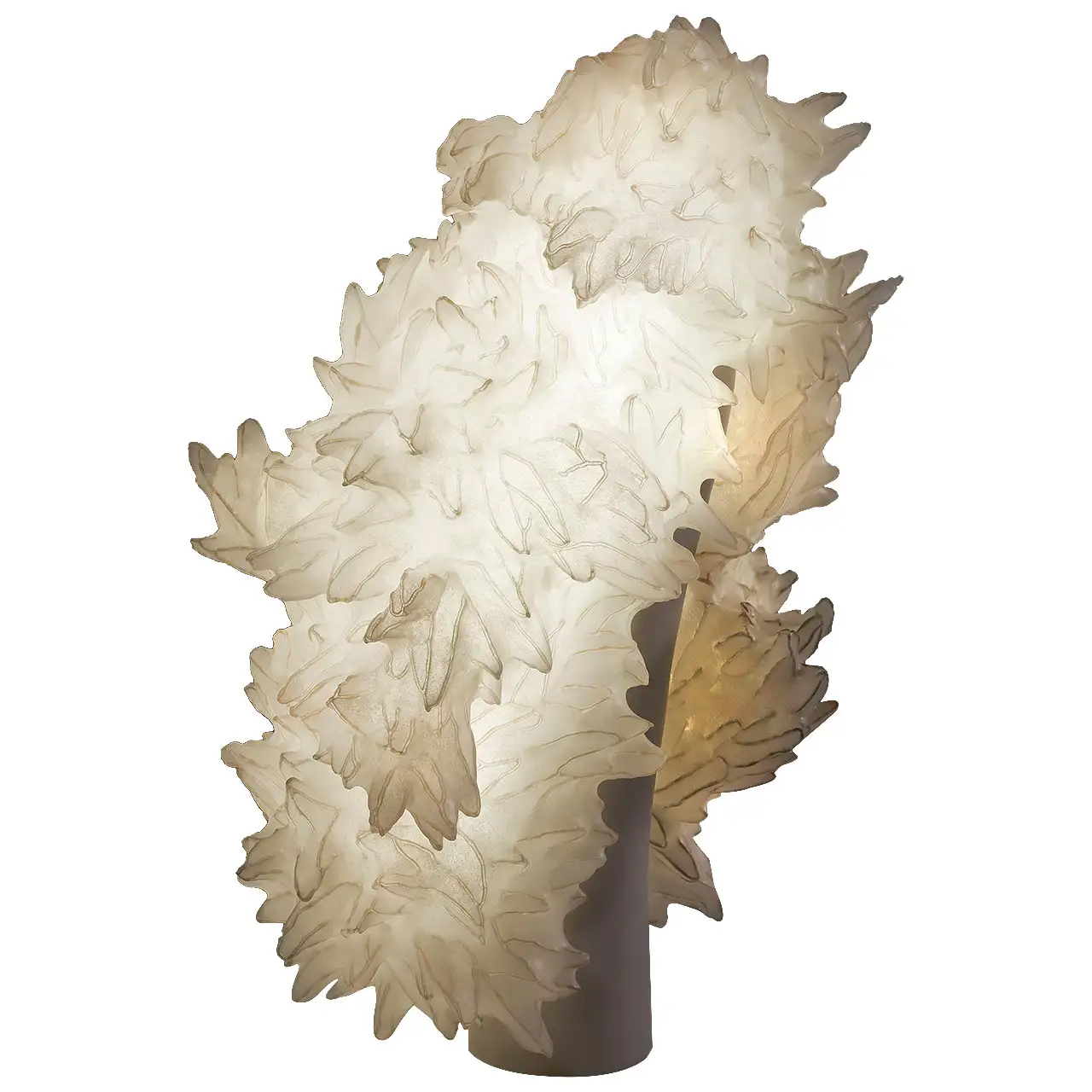November 24, 2024Champagne was flowing freely last month when Maison Gerard celebrated its 50th birthday, but was there anywhere in the venerable Manhattan furniture gallery to leave a glass? Probably not on the polished bronze end tables that framed William Georgis and Ilya Mirgorodsky’s Bombola sofa. Or on the trippy fiberglass Boomerang desk by Maurice Calka for Leleu-Deshays. And certainly not on the parchment-and-black-lacquer sideboard by Dominique or on Ayala Serfaty’s patinated-bronze coffee table. All of which are museum quality.
Had you put a drink down on any of those surfaces, Benoist F. Drut, the genial proprietor of Maison Gerard’s three gallery spaces on East 10th Street in Greenwich Village, might have asked one of the waiters he had hired for the event to remove it. But he wouldn’t have been angry. Drut wants people to know that the works of art he sells are meant to be lived with. In fact, it’s his casual approach to spectacular objects that has helped make Masion Gerard so popular. There were even dogs — including Maxine, Drut’s “royal mutt” (a breed the gallerist invented) — circulating at the party, albeit sans champagne.

Newcomers to the gallery may wonder why it’s not called Maison Drut. Those with longer memories will recall the jovial founder, Gerardus Widdershoven, known to most as Gerard, who launched his eponymous enterprise in 1974, when Drut was still in diapers. Born to Dutch antiques collectors in 1951, Widdershoven made his first purchase at 12 or 13. It was a Bakelite box, the start of what would eventually become a large collection of Bakelite pieces.
After moving to New York, in 1973, he began importing the work of Jacques Adnet, Jean-Michel Frank, Émile-Jacques Ruhlmann and other masters of French Art Deco, which had fallen out of favor. Widdershoven’s gallery, originally located opposite its current digs, scored huge successes as Deco came back into fashion.


In 1993, a young Drut, who had moved to New York from a small town near Paris, met Widdershoven at an antiques fair, and the two men hit it off. Drut was working for a competitor of Widdershoven’s, right across the street. “Every single break, I’d go over to Gerard’s to smoke,” Drut recalls. Along the way, they discovered that they had similar ideas about selling. “Gerard would say, ‘Follow your instincts, don’t follow the trends.’ ”
In 1998, Drut continues, “Gerard approached me and said, ‘Would you like to be my partner?’ ” The younger man said yes, and they added a second space on the same block. Still, “it was just the two of us and a part-time assistant,” Drut remembers. “When I brought my computer to the office — a Gateway, which came in that cowhide-patterned box — Gerard said, ‘What do we need that for?’ And he pointed to the typewriter. We were still doing invoices with carbon paper.” But he and Widdershoven agreed on all the important things. When they were together, there was a “magical energy,” Drut says.

Among their favorite makers was Jules Leleu (1883–1961), who was little known in the U.S. before they focused their attention on him. Over the years, they worked closely with Françoise Sirieux, a Leleu employee and cataloguer. They were the first dealers invited to view a Parisian apartment designed by Leleu in the 1960s. They went on to purchase everything in the flat, and in 2000, the gallery hosted the first exhibition of the postwar work of the designer and his children, André and Paule, who ran the family business until 1973.


Widdershoven and Drut also began working with contemporary creators, whose output complemented the gallery’s vintage and antique offerings. Among them were Ayala Serfaty and Hervé Van der Straeten, both of whom currently have pieces in the gallery. The Tel Aviv–born Serfaty is represented by a hand-felted armchair and a spectacular glass-rod light sculpture inspired by crystals, clouds and corals. Designs by the equally versatile Paris-based Van der Straeten include candlesticks, seating and a mirror encircled by cast-bronze branches.

Widdershoven retired in 2010 and died of lung cancer in 2020. To celebrate the 50th anniversary of the business he founded, Drut hired Serge Drouin, of AtelierTek Architects, to renovate the gallery’s main space, at 53 East 10th Street. Drouin, who worked for Renzo Piano before starting his own firm in 2021, just happens to be the grandson of the great French industrial designer Jean Prouvé, whose work has been shown in the gallery.
Drut asked the architect to “modernize and simplify,” which meant removing interior walls. But Drouin came up with a system of temporary walls that can hang from the ceiling at different heights. He also found four-foot-square ceramic tiles that “give the floor the appearance of stone,” says Drut, who believes Drouin “inherited his grandpa’s ingenuity.”

At the party, Drut found it very moving to see some people who were there when Widdershoven launched Maison Gerard half a century ago. And there were other reminders of the founder. Scattered around the space are “a few little things that he collected, which make me think of him,” Drut says. “Gerard was not there physically, but he was there spiritually.”
Drut has a lot of plans for the gallery’s next 50 years, but changing its name isn’t one of them.



